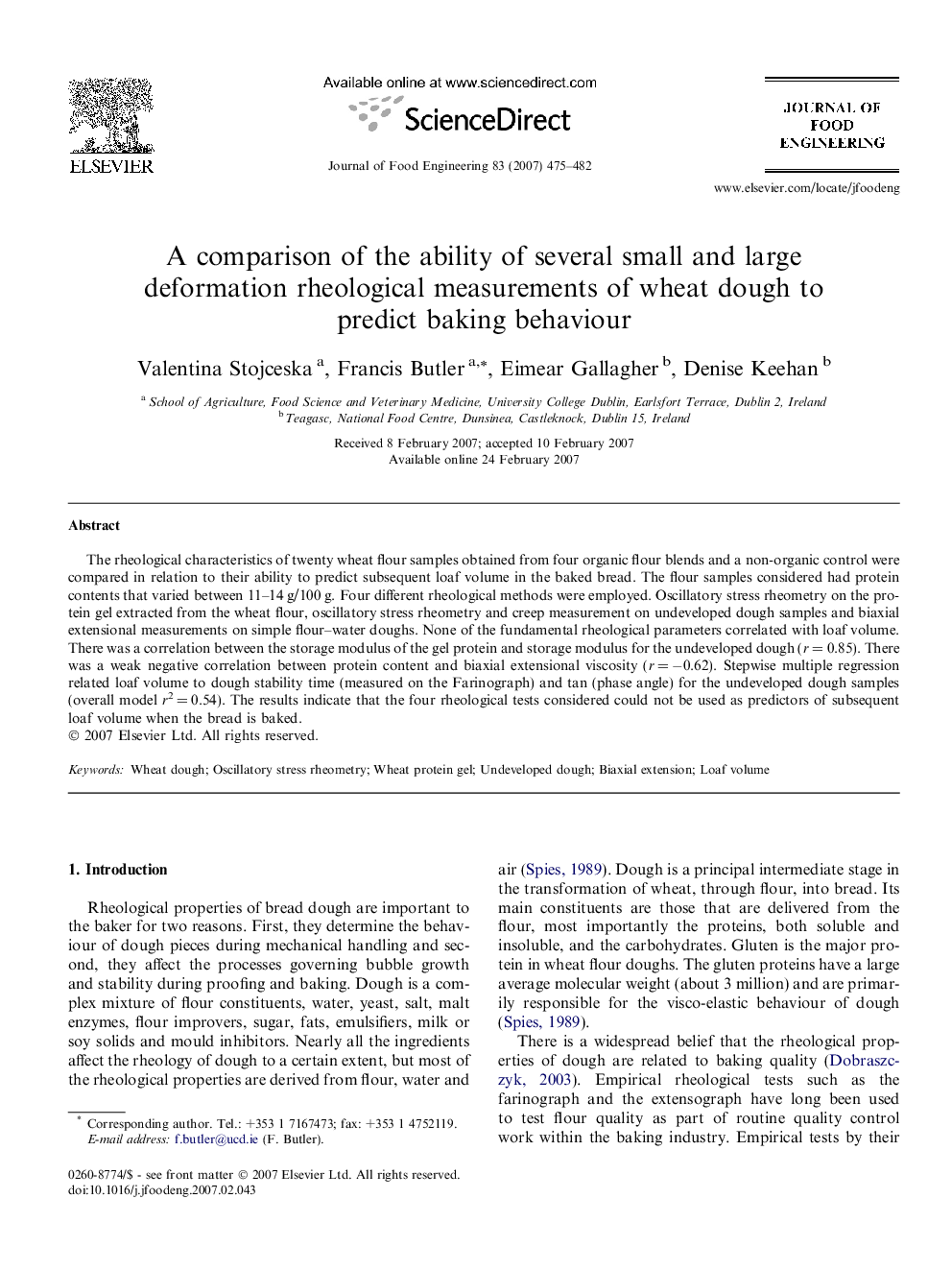| Article ID | Journal | Published Year | Pages | File Type |
|---|---|---|---|---|
| 225337 | Journal of Food Engineering | 2007 | 8 Pages |
The rheological characteristics of twenty wheat flour samples obtained from four organic flour blends and a non-organic control were compared in relation to their ability to predict subsequent loaf volume in the baked bread. The flour samples considered had protein contents that varied between 11–14 g/100 g. Four different rheological methods were employed. Oscillatory stress rheometry on the protein gel extracted from the wheat flour, oscillatory stress rheometry and creep measurement on undeveloped dough samples and biaxial extensional measurements on simple flour–water doughs. None of the fundamental rheological parameters correlated with loaf volume. There was a correlation between the storage modulus of the gel protein and storage modulus for the undeveloped dough (r = 0.85). There was a weak negative correlation between protein content and biaxial extensional viscosity (r = −0.62). Stepwise multiple regression related loaf volume to dough stability time (measured on the Farinograph) and tan (phase angle) for the undeveloped dough samples (overall model r2 = 0.54). The results indicate that the four rheological tests considered could not be used as predictors of subsequent loaf volume when the bread is baked.
